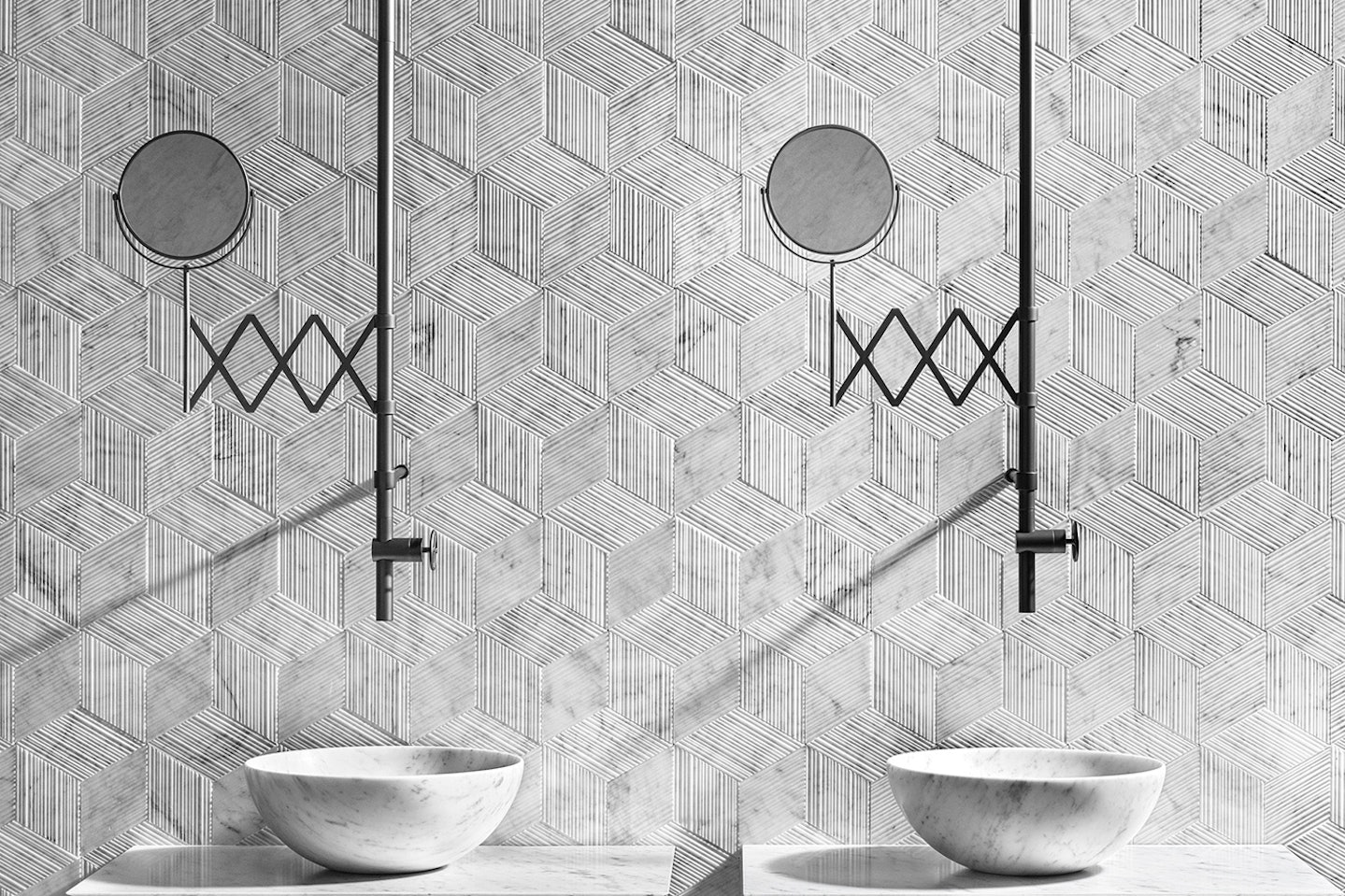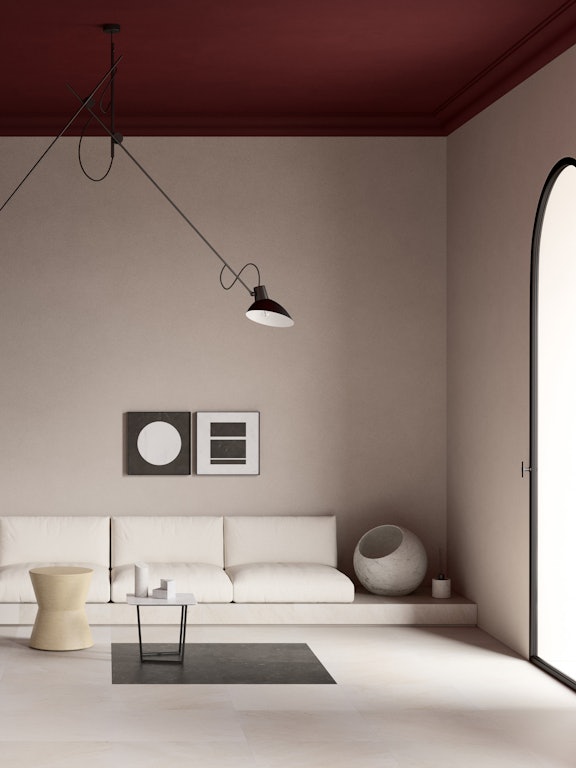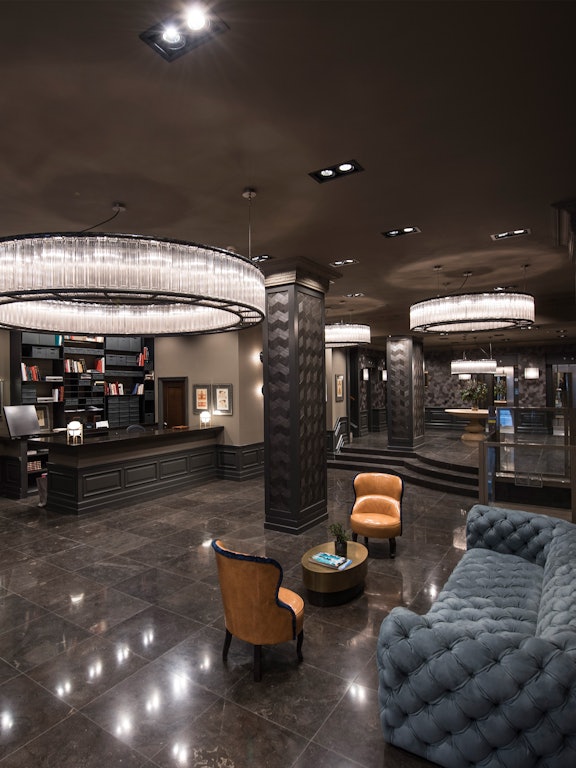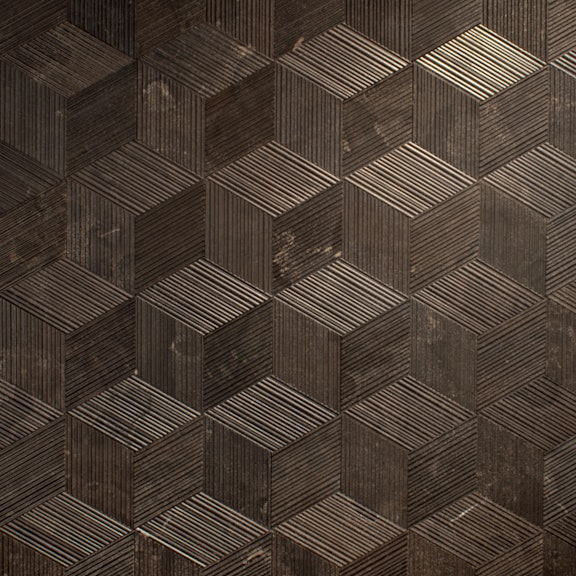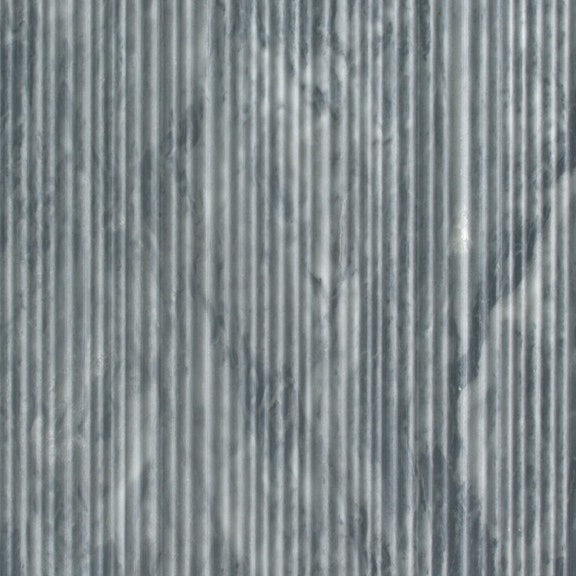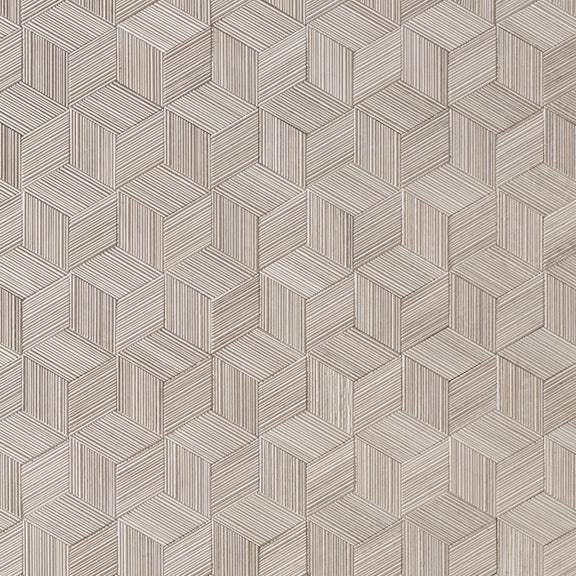Romboo: the eco-friendly 3D stone texture
03.2022
With its three-dimensional effect, Romboo is a popular choice to create striking visual features
Discover the world of Romboo: the eco-friendly 3D texture in natural stone
Nothing need be wasted; you just have to find a way to transform it. That is the philosophy behind Romboo, the natural stone texture that is the perfect example of how the quest for sustainable solutions can lead to innovative designs and products. With its three-dimensional effect, Romboo is a popular choice by interior designers looking to create striking visual features, such as in Bilbao’s Edificio Sota, originally a residence for the local bourgeoisie in the early 20th century, and today a stylish mix of private residences, offices and boutiques.
So just what makes Romboo so special? What’s the story behind its invention and how can it be used to best effect to create stunning interiors? Let’s take a look.
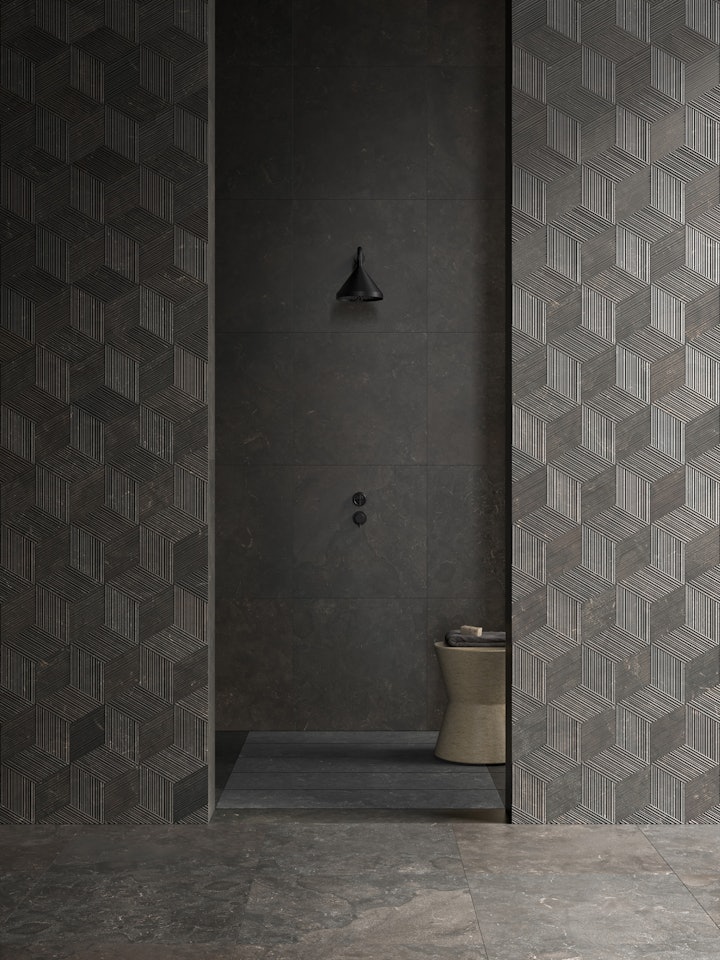
Introduction to Romboo
Romboo is an evolution of one of our most cherished textures, Bamboo, and was invented as a way to reuse the offcuts that we were simply having to throw away. Here we had an elegant ribbed texture in gorgeous natural stone, and it simply seemed a terrible waste. We never forget that stone is a gift of nature and it’s up to all of us to treasure and protect it, treating it with the respect and care it deserves. And so, we came up with the idea of cutting those leftover pieces of Bamboo at a 45-degree angle into small, rhomboid-shaped. The result was Romboo.
The clean, elegant lines of the original Bamboo are maintained, but the three-dimensional effect created when the new tiles are placed together is strikingly original and eye-catching.
That’s not to see, however, that it becomes overwhelming, because the fluidity of Bamboo, even if interrupted, cannot be completely disguised, with Romboo guaranteed to bring a harmonious touch of interest to any space, from bathroom to kitchen to hallway or lobby.
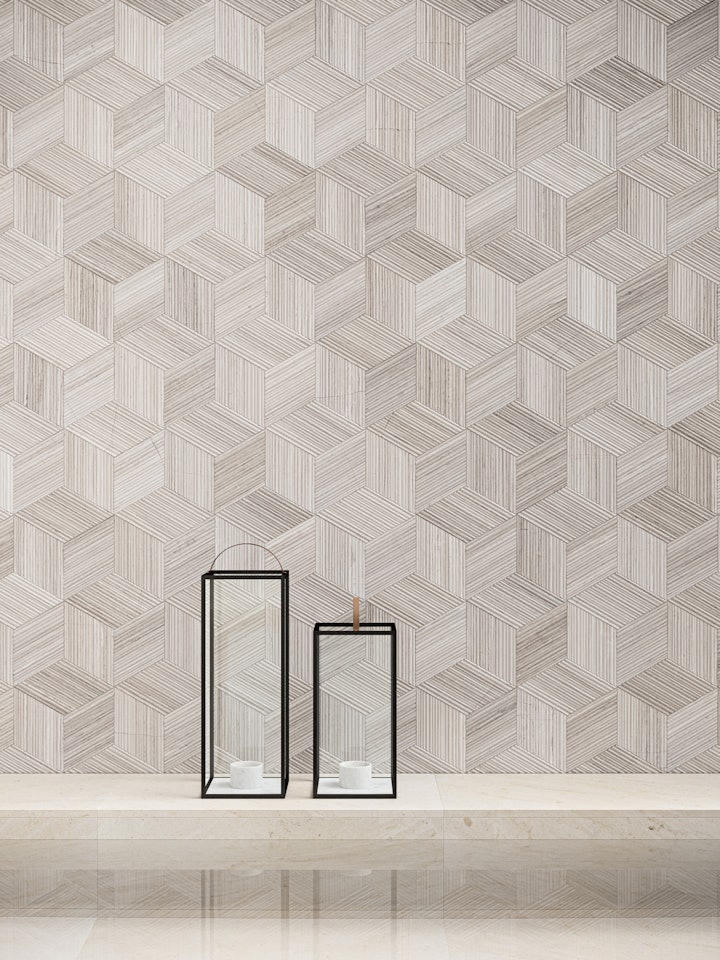
The history of Romboo
While sustainability has become something of a buzzword over the past decade or so, it has been a consideration at Salvatori for over 40 years. In fact, we can go back to 1975 when Alfredo Salvatori, father of our current CEO, found a way to reuse the water used during the stone cutting process. He invented the first closed-circuit water filtration system in the sector, and ever since then, Salvatori has continued to develop eco-friendly solutions in all areas of the business.
A particular focal point has long been the amount of stone that is thrown away, so being able to find a way to reuse offcuts of our Bamboo texture represented another mini breakthrough in reducing wastage. And, even better, it achieves that elusive triple of quality, aesthetics and sustainability in one single product.
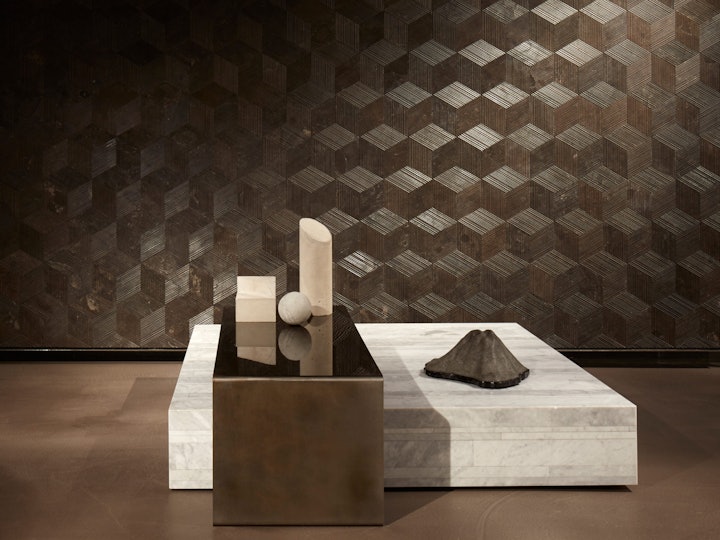
The technical bits and pieces
Romboo is wonderfully versatile and can be used both inside and outside, for entire walls or smaller areas where you want to create a design feature.
There are three essential aspects to consider when you’re thinking about choosing Romboo:
- The materials it is available in
- Tile size
- How it interacts with light
Each of these contributes to the overall effect once installed, so we’ll take a quick look at each in turn, keeping things simple and providing plenty of inspiring photos.
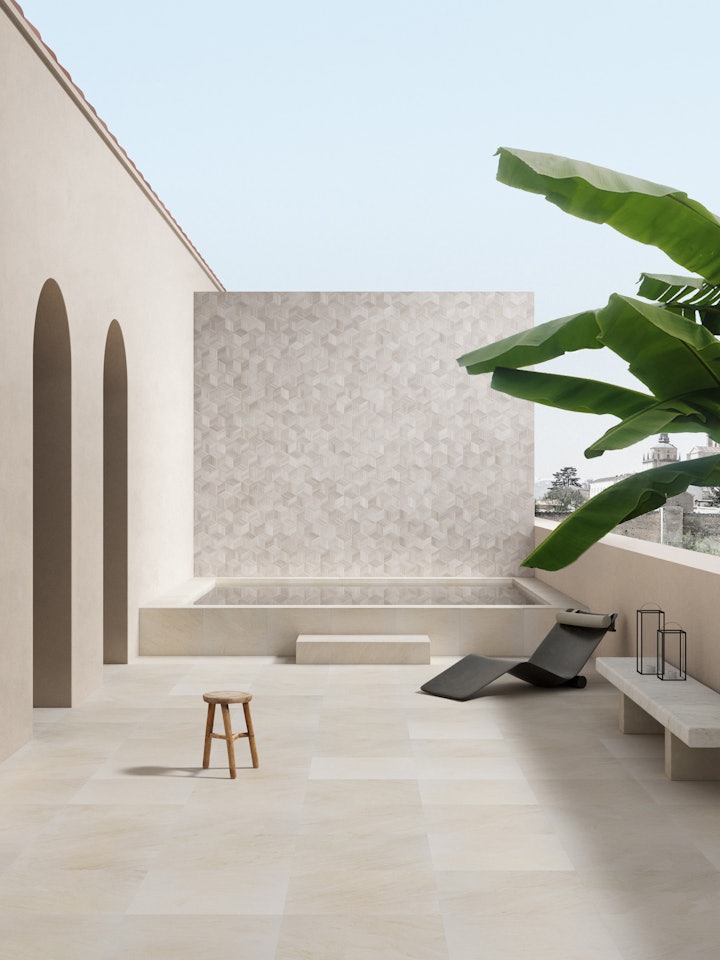
Types of stone
Romboo is available in a white marble (Bianco Carrara) and three different limestones, covering a palette of elegant neutral colours from white through to dark brown:
Without going into detail regarding the various characteristics (as you can find these in the links above), we always like to remind readers that when it comes to choosing a stone, although colour is most likely the most important factor, there are other aspects to consider. Bianco Carrara, for example, is highly resistant to abrasion and extreme temperatures, and is extremely hardwearing compared to other stones.
Pietra d’Avola shares these characteristics, but it’s just worth bearing in mind that its lovely deep brown tone can fade a little as the years pass.
Silk Georgette® and Crema d’Orcia can also be used for interiors and exteriors but are slightly less resistant to abrasion so over time, you will inevitably see small scratches on their surfaces, but such “blemishes” shouldn’t detract from the overall beauty of these gorgeous natural materials.
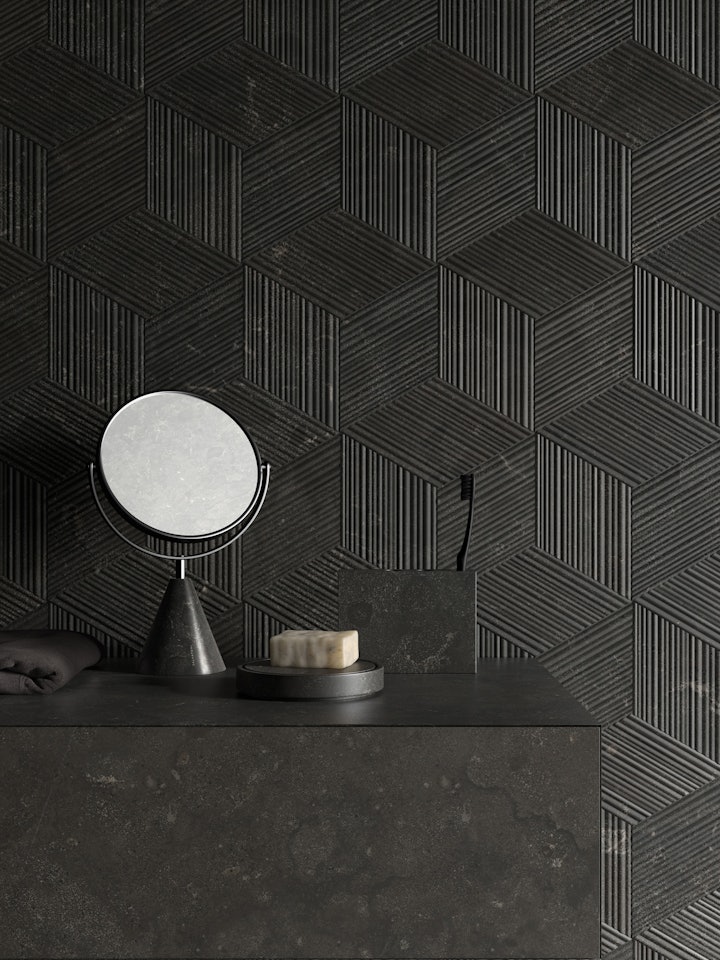
Tile size
Each diamond-shaped tile is 114x195x10 mm, and the magical 3D effect is created by placing three pieces together, creating a six-sided shape with a length of 195 mm. It’s also handy to know that every square metre is made up of 90 tiles.
We are big fans of the so-called “zero joint” at Salvatori, particularly with textures such as Romboo where wide grout lines would spoil the fluidity and reduce the three-dimensional look.
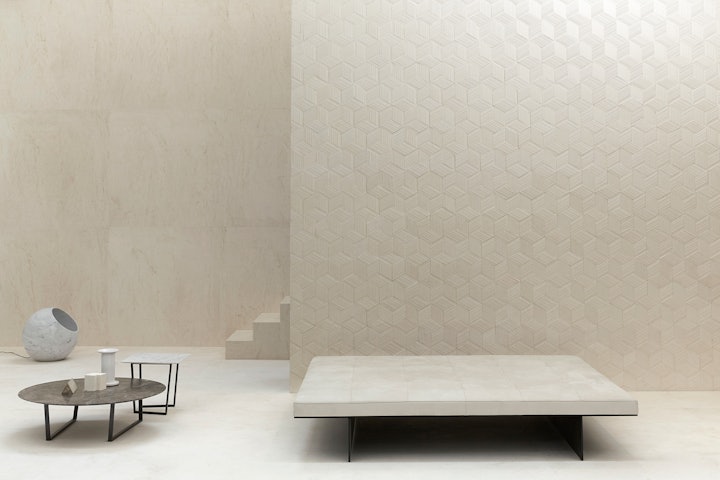
Lighting
Although Romboo is eye-catching on its own, it truly comes alive when you add the X factor to it, and that, without doubt, is lighting. When the light washes across the texture, you see the rhomboid shapes thrown into relief and an intriguing play of shadows creates a truly special atmosphere.
After this quick overview of Romboo, we hope that you can now appreciate it not only for its original and striking appearance, but also for its eco-friendly credentials, meaning you can create stunning interiors with a clear conscience.
If you’re intrigued by what you could achieve with this texture, why not browse through our image gallery or get in touch with us and organise a free design consultation!
